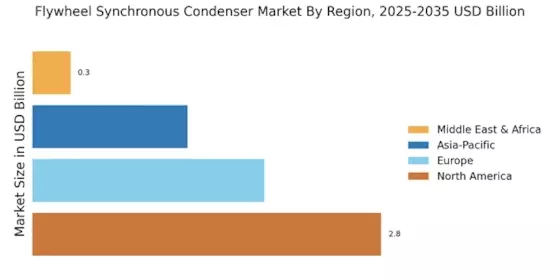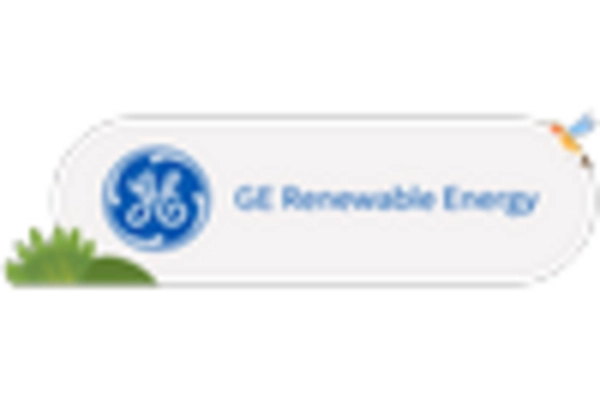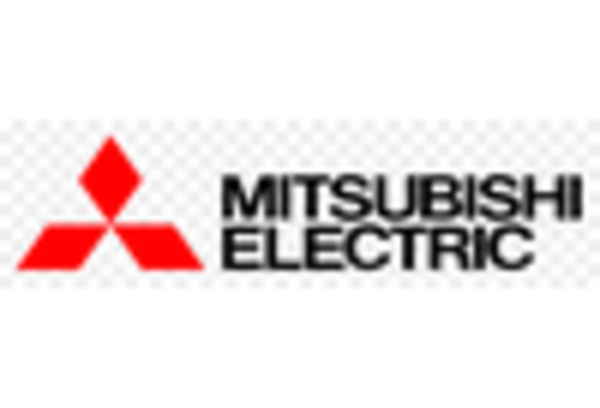Rising Need for Grid Stability
The Flywheel Synchronous Condenser Market is significantly influenced by the rising need for grid stability. As electricity demand fluctuates, maintaining a stable grid becomes increasingly challenging. Flywheel synchronous condensers offer a rapid response to voltage fluctuations, thereby enhancing grid reliability. The market data suggests that the global demand for grid stability solutions is expected to grow at a compound annual growth rate of approximately 6% through 2025. This growth is driven by the need for utilities to prevent blackouts and ensure a consistent power supply. Consequently, the adoption of flywheel technology is likely to expand, as it provides a viable solution for utilities aiming to enhance grid performance and resilience.
Supportive Government Policies
Supportive government policies are playing a pivotal role in shaping the Flywheel Synchronous Condenser Market. Many governments are implementing incentives and subsidies to promote the adoption of energy storage technologies, including flywheel systems. These policies are designed to encourage investments in renewable energy and enhance grid stability. For instance, various countries have introduced tax credits and grants for projects that incorporate flywheel technology, thereby stimulating market growth. The market data indicates that regions with favorable regulatory frameworks are witnessing a higher adoption rate of flywheel synchronous condensers, suggesting that government support is a critical factor in driving the expansion of this market.
Growing Industrial Applications
The Flywheel Synchronous Condenser Market is also benefiting from the growing industrial applications of flywheel technology. Industries such as manufacturing, mining, and data centers are increasingly recognizing the advantages of flywheel synchronous condensers for power quality management and energy efficiency. These sectors require reliable power supply and voltage stability to operate efficiently. Market analysis reveals that the industrial sector is expected to account for a significant share of the flywheel synchronous condenser market by 2025, driven by the need for enhanced operational efficiency and reduced energy costs. This trend indicates a promising outlook for the Flywheel Synchronous Condenser Market as more industries adopt these advanced energy storage solutions.
Increasing Renewable Energy Integration
The Flywheel Synchronous Condenser Market is experiencing a notable surge due to the increasing integration of renewable energy sources. As countries strive to meet ambitious carbon reduction targets, the demand for energy storage solutions has escalated. Flywheel synchronous condensers play a crucial role in stabilizing the grid by providing reactive power support, which is essential for accommodating the intermittent nature of renewable energy sources like wind and solar. According to recent data, the global renewable energy capacity is projected to reach over 3,000 GW by 2025, necessitating advanced technologies such as flywheel systems to ensure grid reliability. This trend indicates a robust growth trajectory for the Flywheel Synchronous Condenser Market, as utilities and energy providers seek efficient solutions to manage the complexities of renewable energy integration.
Technological Innovations in Energy Storage
Technological innovations are a key driver for the Flywheel Synchronous Condenser Market. Advances in materials science and engineering have led to the development of more efficient and durable flywheel systems. These innovations not only improve energy storage capacity but also enhance the overall performance of synchronous condensers. Recent studies indicate that the efficiency of flywheel systems has improved by over 20% in the last few years, making them a more attractive option for energy providers. As the demand for high-performance energy storage solutions continues to rise, the Flywheel Synchronous Condenser Market is poised for growth, driven by these technological advancements that promise to deliver enhanced reliability and efficiency.


















Leave a Comment